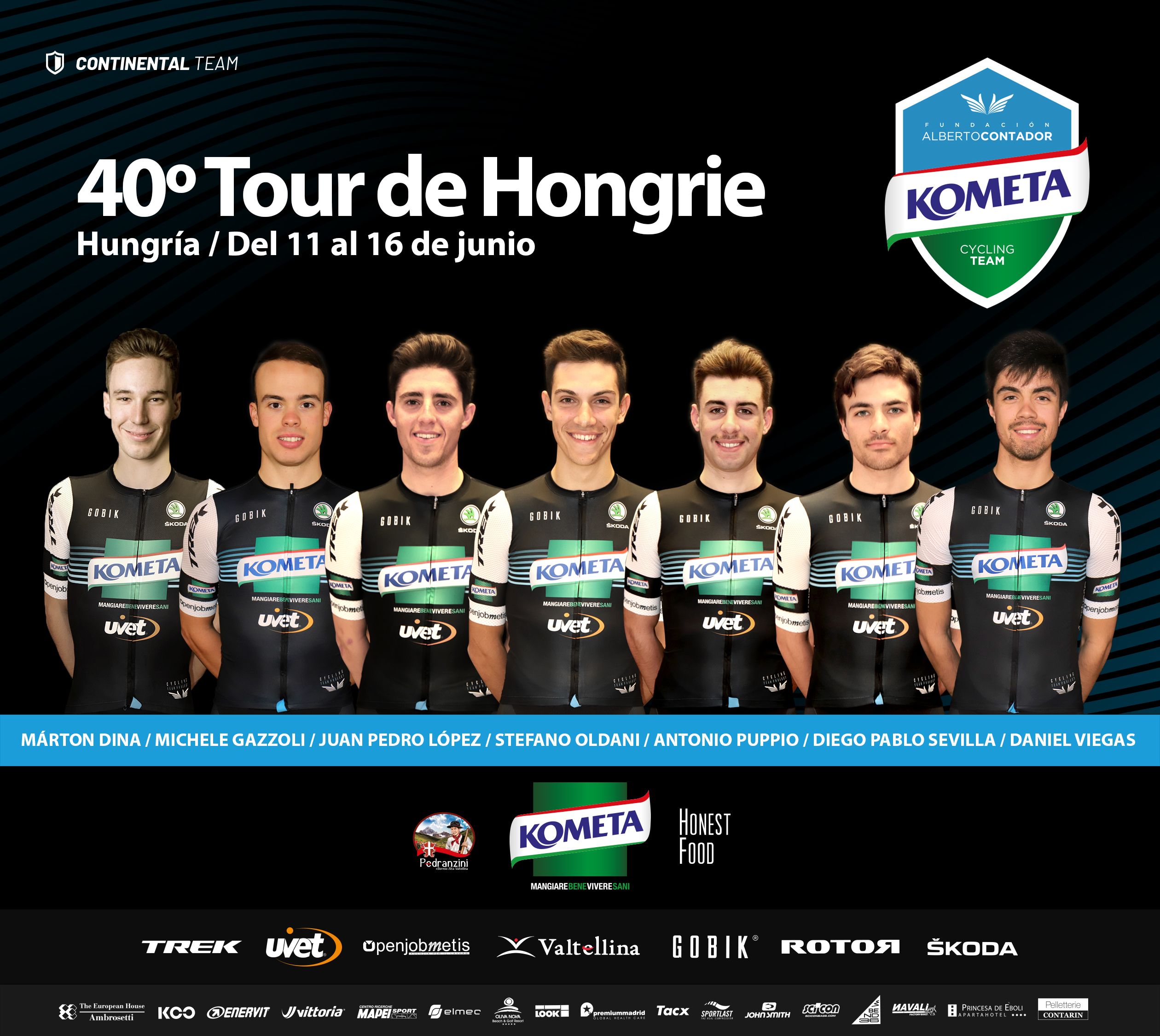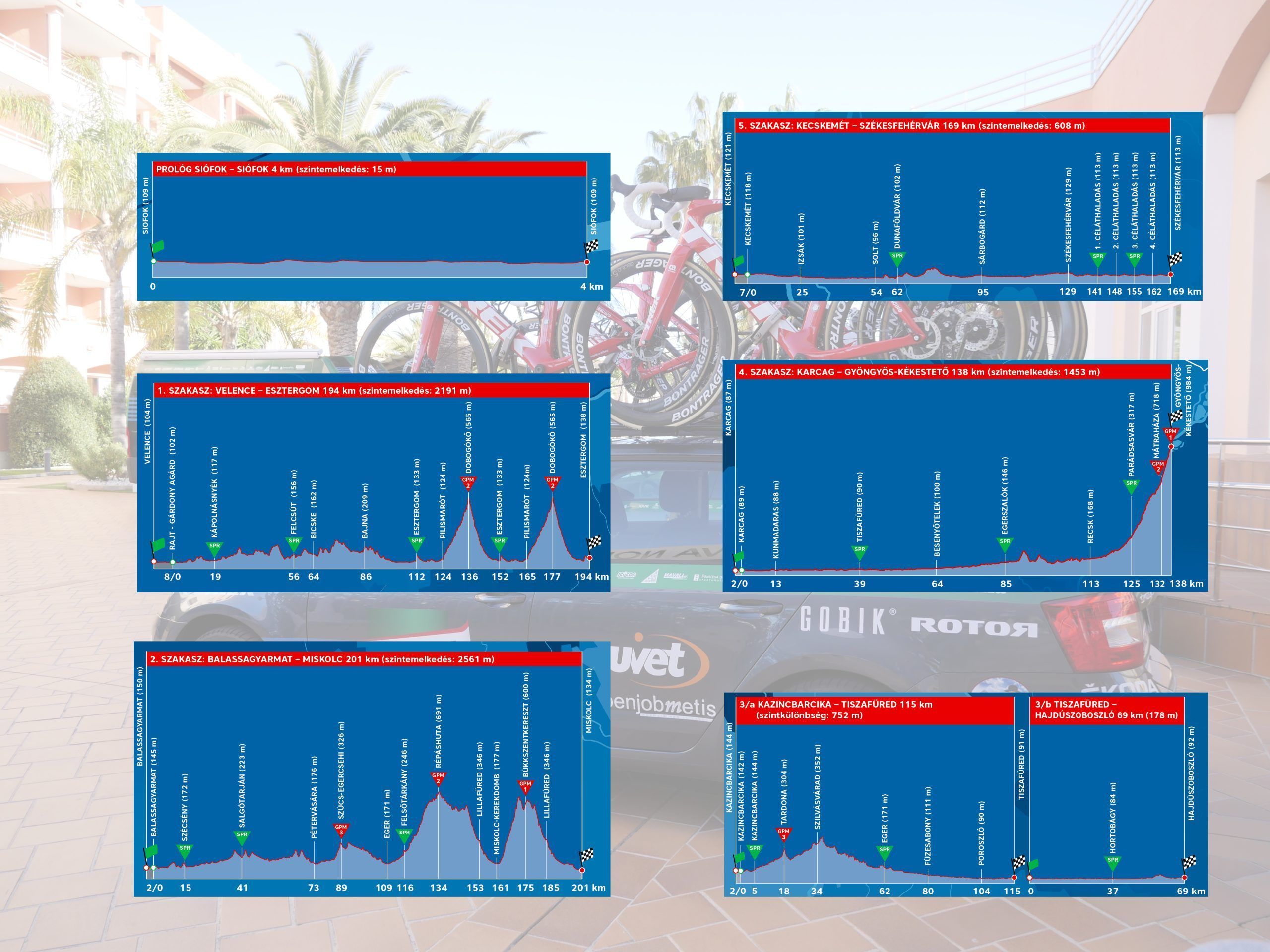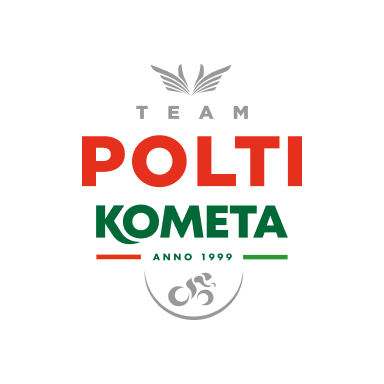A revamped Tour of Hungary arrives, great objective of the season and stage for Márton Dina’s debut

40thTour de Hongrie
From 11 to 16 June
Less than a year later, the big goal of the season. The Tour de Hongrie will start next Tuesday 11 June with a prologue that will concretize the change of dates promoted for this season by the organisation of the Magyar event. From August to June, a movement with which the Hungarian race seeks to promote its own space within the European calendar in the weeks prior to the Tour de France. These dates will allow it to grow as a sporting event, although on this occasion it will share the agenda with the Criterium Dauphiné. A step forward with a view to the future. Born in 1925, the Tour of Hungary has been accompanied by intermittence since its birth. Its rebirth towards 2015 has brought with it a revitalizing energy.
For the Kometa Cycling Team the great moment of the season comes, given the enormous interests of its main sponsor in the Central European country. The ambitions are the highest for a squad that will be formed by the Italians Stefano Oldani, Antonio Puppio and Michele Gazzoli, the Spaniards Juan Pedro López and Diego Pablo Sevilla and the Portuguese Daniel Viegas; also, completing the ‘seven’ the Hungarian Márton Dina. The last signing of the continental formation of the Alberto Contador Foundation will officially debut in its new colours in this event. “I’m absolutely excited and I can’t wait to start pedalling”, says the Budapest rider.
 The team led by Jesús Hernández has profiles to give battle on all terrains, with fast men for the mass arrivals, with versatile riders for the nervous finals and the search for breaks, and with cyclists who climb very well. “For our sponsors it is a fundamental race and we want to live up to expectations. We come with a powerful team, varied and with options for all terrains. And with all the ambition to do great things,” says sports director Jesús Hernández. In 2018, the Madrid team won one stage and two second places with sprinter Matteo Moschetti.
The team led by Jesús Hernández has profiles to give battle on all terrains, with fast men for the mass arrivals, with versatile riders for the nervous finals and the search for breaks, and with cyclists who climb very well. “For our sponsors it is a fundamental race and we want to live up to expectations. We come with a powerful team, varied and with options for all terrains. And with all the ambition to do great things,” says sports director Jesús Hernández. In 2018, the Madrid team won one stage and two second places with sprinter Matteo Moschetti.
“I was able to have a look at the route and I think it is very nice. Most of the stages have their climbs, which we always like”, says Juan Pedro López. The Andalusian cyclist will be one of the great assets of the Kometa Cycling Team: “I am convinced that the team will be up to the challenge, we are all very motivated to do well. Then in the race there are a lot of things that influence its development, but we’re going with enthusiasm”. His team-mate Diego Pablo Sevilla adds: “This year’s Tour of Hongrie will perhaps be more interesting for us than the previous one, with a bit more harshness. From what I have seen they are not very steep climbs. But surely the race is much more selective than last year, something that is good for us”.
Stefano Oldani has signed up to eleven positions among the first ten stages or general during this his first season as a professional and will be another of the riders with gallons. “I really like the route proposed by the race. Although the prologue is more suitable for much more powerful people, I will try to do it well. And then, the next two stages are two very good days for me, with a little climb near the finish line and, theoretically, to reach the sprint in a not very big group. In general it’s a route that I like very much and I think it can be done very well”.
The change in the calendar is not the only great novelty of the 40º Tour de Hongrie . Vuelta Sportiroda, the organising company, has increased the hardness of the route for this edition. The start continues against the clock, but the intermediate routes of the first two stages in line are hardened with the inclusion of small orographic difficulties (Dobogoko, on two occasions, the second day; Repashuta and Bukkszentkereszt, the third). “Profiles can be a little deceptive and look a little harder than they really are,” says a field connoisseur such as Márton Dina.
The zenith of the demand will come on Saturday with the final on Kékestető, the country roof with its 1,014 meters and a visual reference for its huge telecommunications antenna, in addition to hosting an important winter sports center. “It is a climb of about thirteen kilometers whose hardness is concentrated in the last four, with a more irregular road surface and some ramps up to 13.5%. It is the great Hungarian ascent”, says Dina about the arrival to this important landscape environment in which many questions will be decided for the general one.
The stages.
11 June: Siófok – Siófok (4 km, CRI).
12 June: Velence – Esztergom (194 km).
13 June: Balassagyarmat – Miskolc (201 km).
14 June (a): Kazincbarcika – Tiszafüred (115 km).
14 June (b): Tiszafüred – Hajdúszoboszl (69 km).
15 June: Karcag – Gyöngyös-Kékestető (138 km).
16 June: Kecskemét – Székesfehérvár (169 km).


































